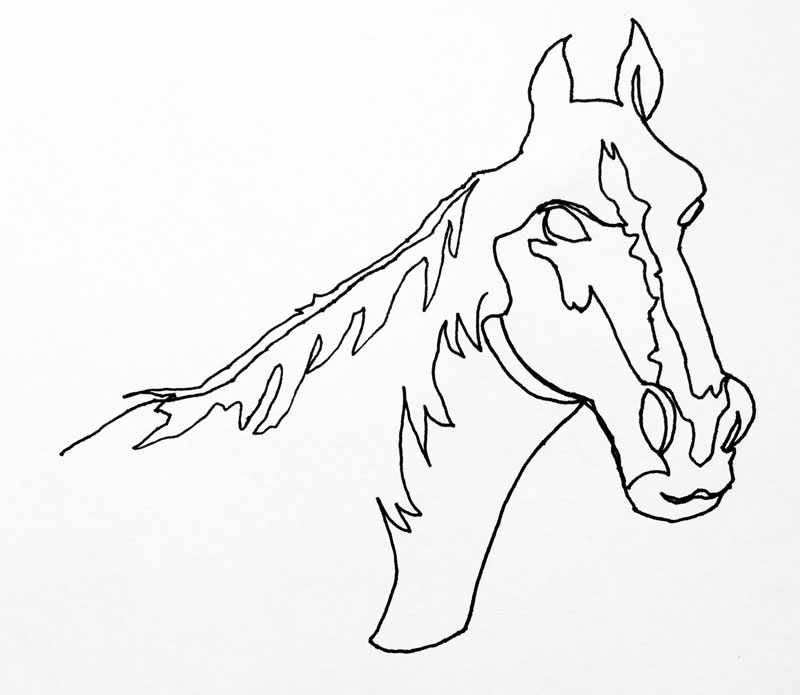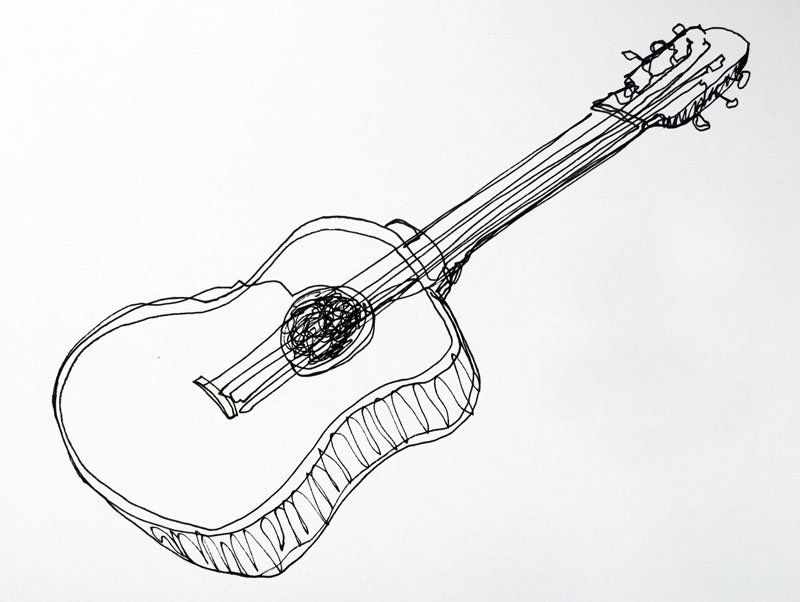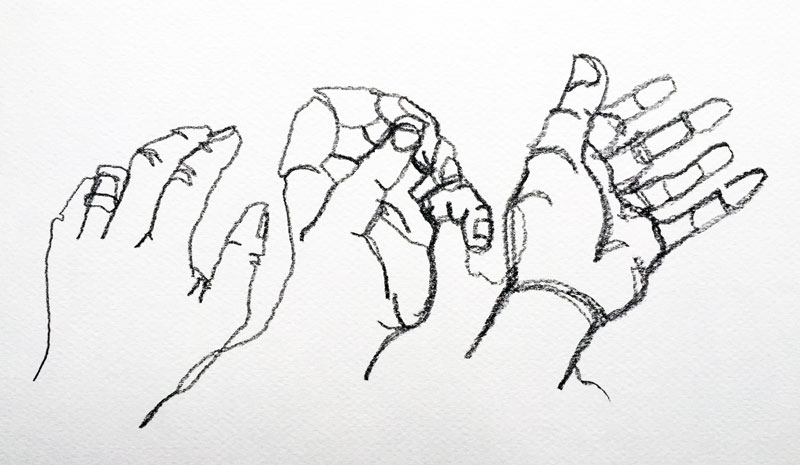A continuous line drawing is one in which a single, unbroken line is used to develop the image. Although mostly created as an exercise, many continuous line drawings can stand on their own as finished works of art.
As an exercise, continuous line drawing forces the artist to closely observe the perceived lines of the subject. While focused mostly on describing the contours, shadows and form can also be communicated depending on the approach taken.
Aside from the fact that a continuous line drawing can be a work of art in its own right, it is also a worthy drawing exercise for developing hand-eye coordination and observation skills. As artists, we need to spend a bit of time in practice to further develop our drawing skills.

Simple line drawings such as these can be created in any environment and do not require a hefty time investment. A sketchbook could be filled with them in a matter of days. Most drawings only require a few minutes to benefit from the exercise.
Any mark-making tool can be used, but pens, markers, and graphite pencils are most commonly used.
While there should never be a set of rules for making art, there are a few parameters to make the drawing exercise most effective.
The first thing you should recognize is that no drawing will be perfect. With continuous line drawing, the imperfections will be very clear. However, it is often these very same imperfections that make the drawings so visually interesting. So, instead of avoiding the imperfections of the mark, embrace them and allow them to add a bit of character to the end result.
Ok, now to the "rules"...
*A continuous line drawing is slightly different from a blind contour line drawing. A blind contour line drawing is a continuous line drawing, but the artist does not look at the drawing surface, only at the subject.

Don't be fooled. Creating a successful continuous line drawing is a little trickier than it may look. Sure, the finished result is rather simple, but the simplicity actually makes its a challenge.
Your choice of subject also plays a role. I would suggest working with a subject that will challenge you, but still has clear lines and areas of contrast to work with. Subjects in low light will prove to be difficult because all of the lines may not be clearly visible.
One subject that is always great to work with is with you all the time - right at the end of your arms. Your hands are perfect as subjects for drawing because they present an "attainable" challenge. Plus, they can be configured in endless positions.

For the above exercise, draw your hand from three different positions, but keep the pencil on the surface throughout the process. Try to draw all three hands with just one line, changing the positions of your hand while you draw. Remember, it's okay if the proportions become a little distorted.
Drawing is a skill that requires practice. Just like other skills, you need to exercise your mind to improve your drawing from time to time. Creating a continuous line drawing is a great exercise to just that.
So grab that sketchbook and start having some fun and improve your observational skills at the same time.